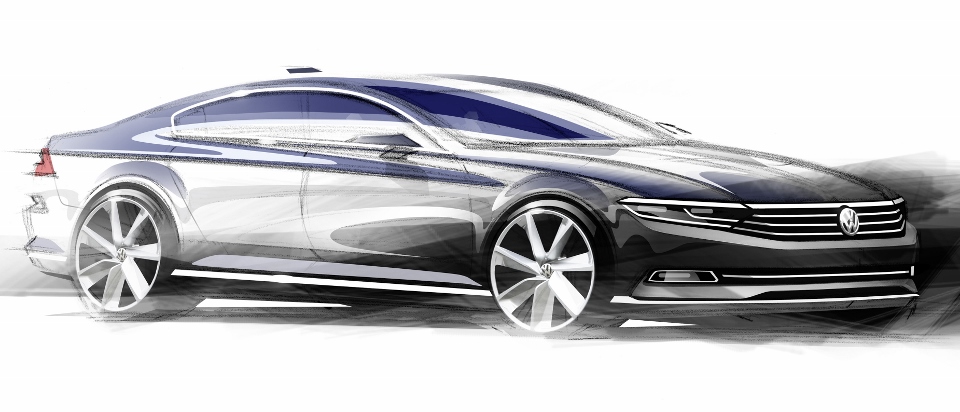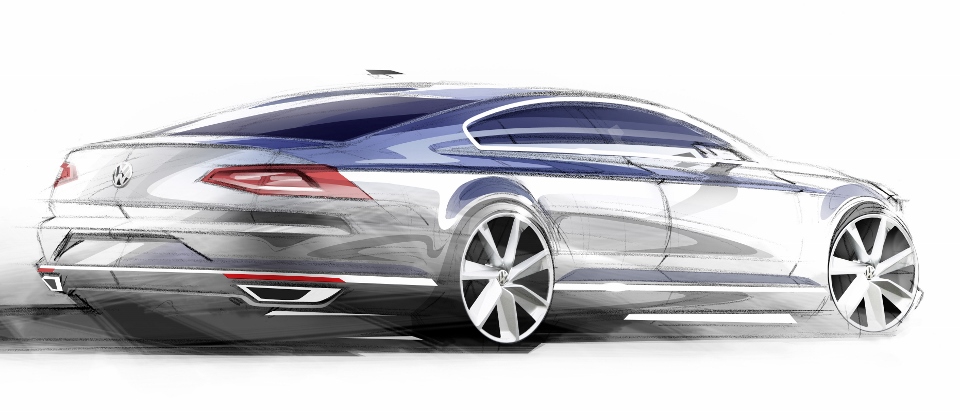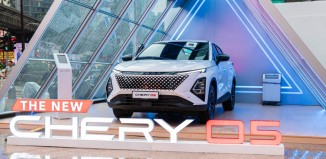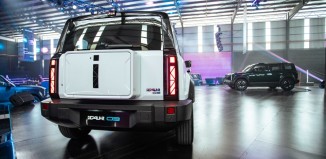Sketches tease all-new 8th generation Volkswagen Passat
Ahead of its scheduled launch later this year, Volkswagen has released a series of sketches and technical details of its upcoming all-new eighth-generation Passat.
The current Passat is noted for being a quietly competent vehicle that is technically sophisticated but unremarkable from an aesthetic and dynamic standpoint. Indications are that we will see more of the same from the new model – sketches suggest a vehicle that conforms with the VW family look, but details highlight almost class-leading levels of technology.
When it launches, the all-new 8th-gen Passat will be the largest vehicle to be underpinned by VW’s MQB transverse platform, and like all MQB models before it, the Passat will enjoy considerable savings of weight – up to 85kg of mass can be shaved depending on variant, and thanks to advanced structural engineering, chassis stiffness is improved by 2,000 Nm per degree.
The range of engines powering the Passat boast outputs starting from 118hp to 276hp, with a key highlight being the new 237hp/500Nm 2.0-litre TDI bi-turbo from the EA 288 diesel engine family. With a specific output of 118hp per litre, this is the most powerful diesel engine ever fitted to a Passat and its cylinder crankcase, crankshaft, connecting rods and pistons are structurally designed to cope with combustion pressures of up to 200 bar. Refinement is maintained with the use of a centrifugal pendulum absorber to minimize vibrations.
To optimize delivery of its rich vein of torque, this version of the Passat will be fitted with 4Motion AWD and a 7-speed DSG as standard. Performance numbers have yet to be stated, but VW’s press materials are nevertheless boasting 5.0 l/100km as the ballpark figure for its fuel consumption.
The other highlighted powertrain is a plug-in hybrid which mates a 154hp 1.4 TSI petrol engine with a 107hp electric motor to produce a combined maximum output of 208hp, same as the Mk VI Golf GTI, but with a lot more torque (400Nm) and a lot less fuel consumed, expected to be similar to the Golf GTE’s consumption of 1.5 l/100km in the combined European cycle pending homologation. VW claims that the Passat Hybrid will smash the century sprint in under eight seconds and max out at over 210kph. With its batteries fully charged, the Passat Hybrid has an estimated (perhaps optimistic) all-electric cruising range of up to 50km.
The amenities front make for similarly interesting reading. Even in the most basic five-inch ‘Composition Touch’ infotainment system incorporates an AUX-IN socket and SD card reader with USB stick and Bluetooth available as optional enhancements. A total of five distinct infotainment systems are available, the highest being ‘Discover Pro’ with an eight-inch screen and GPS navigation.
Standard instruments on the Passat will be the old fashioned analog meters, but higher variants will have a 12.3-inch 1,440 x 540-pixel Active Info Display virtual instrument panel that allows 2D and 3D projection of various driving information from the traditional instruments to satellite navigation and infotainment. Also available is heads-up display, which projects key information into a foldable pop-up glass panel.
Big strides are similarly made in driving aid systems, where we see the 360-degree aerial view transition from the Touareg and Park Assist entering its third generation implementation. From Park Assist 2.0, which performs side and reverse parking, Park Assist 3.0 adds front-in parking into perpendicular parking spots. As before, the system still requires manual operation of the transmission and pedals, with only steering action being automated. Building on that, although not entirely relevant to the Malaysian market is Trailer Assist, which helps the driver to accurately reverse with a trailer.
Other notable driver assist systems to be incorporated into the new Passat include blind spot assist with active steering intervention, Adaptive Cruise Control with Traffic Jam Assist and Lane Assist, and finally autonomous emergency braking that utilizes both camera and radar detection with pedestrian recognition. Despite reservations on our part, autonomous braking will become increasingly common in European cars in the years to come, as it is mandated as a five-star rating prerequisite by Euro NCAP.
KON
Pictures: Official VW release.




























